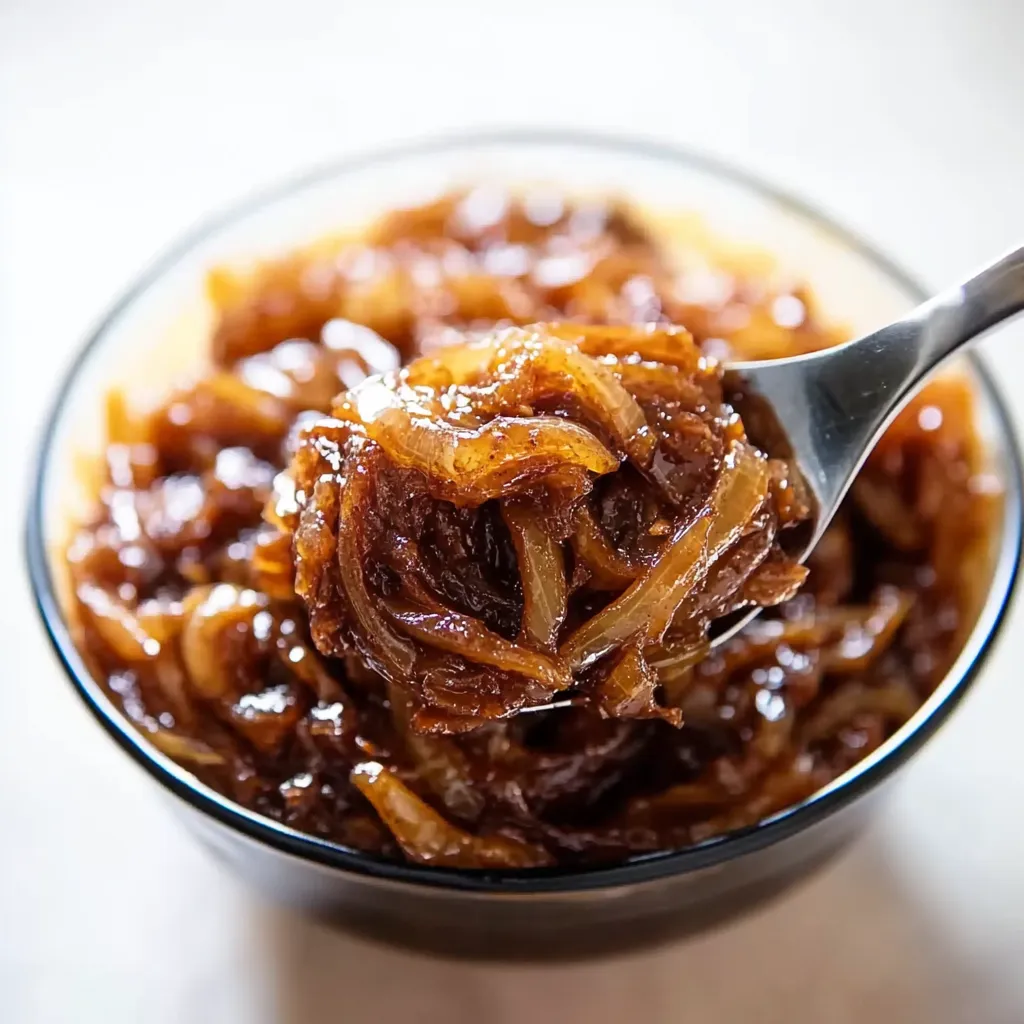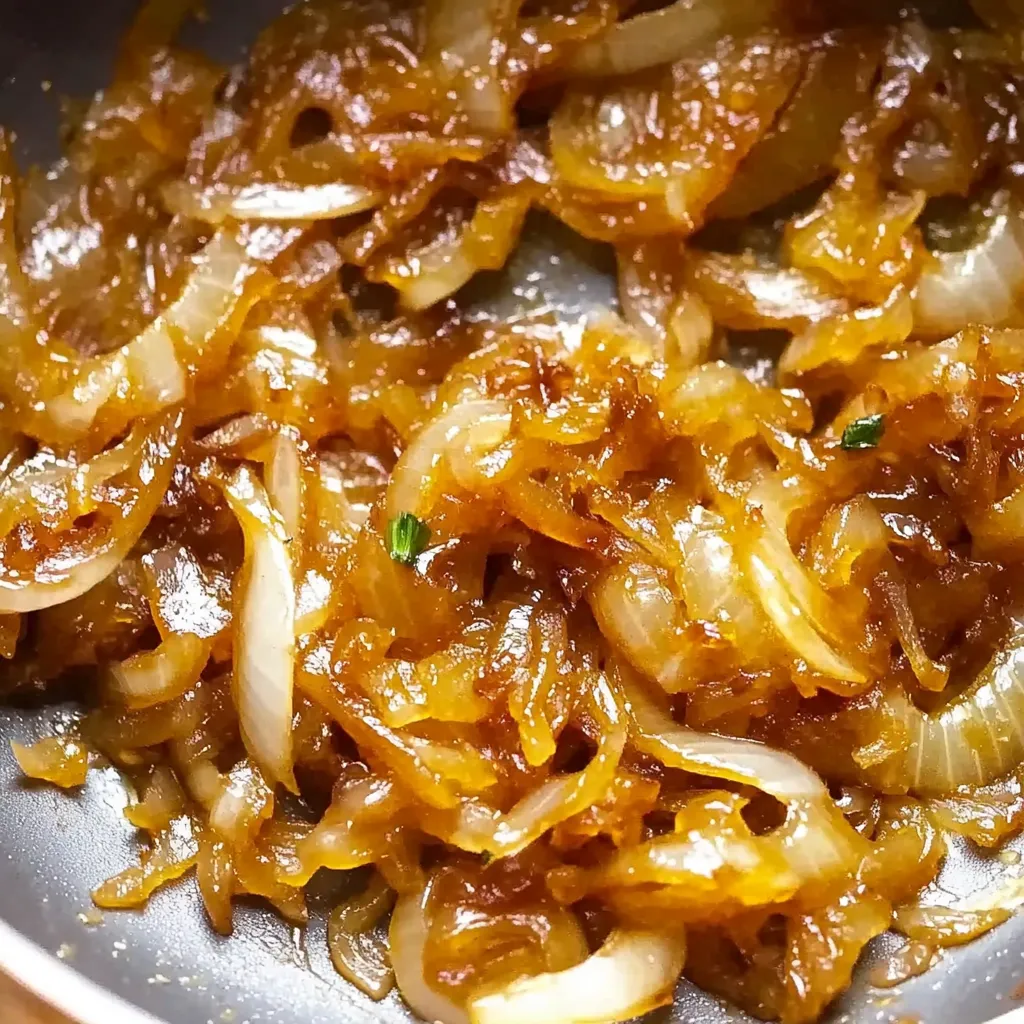 Pin it
Pin it
Transforming raw onions into a rich, golden-brown delicacy is one of cooking's most rewarding processes. These caramelized onions develop an incredibly deep, sweet flavor that adds complexity to countless dishes. While patience is essential, the result is a versatile kitchen staple that elevates everything from soups to sandwiches.
I've spent countless hours perfecting this technique in my home kitchen. What started as a simple French onion soup craving turned into a weekly ritual. Now, I always keep a batch in my freezer, ready to transform an ordinary meal into something special. The aroma that fills my kitchen during the process has become one of my favorite cooking experiences.
Kitchen Essentials
- Yellow onions: Their balanced sugar content creates the perfect caramelization.
- Unsalted butter: Provides rich flavor and helps control the browning process.
- Kosher salt: Draws out moisture and enhances the natural sweetness.
- Black pepper: Adds a subtle warmth that complements the sweet onions.
The Art of Caramelization
- Precise Preparation:
- Slice onions to a uniform thickness of about one-eighth inch. Trim both ends and slice from pole to pole to help them maintain their shape during cooking.
- Initial Cooking Phase:
- Melt butter in a heavy-bottomed pan until foamy. Add sliced onions and stir to coat them in butter. Let them cook undisturbed until they soften and turn translucent.
- The Transformation:
- Reduce heat to medium-low and stir occasionally, allowing the onions to darken gradually. Add small amounts of water if needed to prevent sticking and incorporate the flavorful browned bits from the pan.
 Pin it
Pin it
Growing up, my grandmother would always keep a jar of caramelized onions in her refrigerator. She taught me that patience is the key ingredient. I remember watching her stir the onions methodically, explaining how each stage of browning brought out different flavors. Now, whenever I make them, those memories come flooding back.
Endless Possibilities
Transform ordinary grilled cheese into a gourmet experience by adding a generous layer of caramelized onions. Toss them with roasted vegetables to add depth and sweetness. Stir them into scrambled eggs for an elevated breakfast. The rich, sweet flavor enhances practically any savory dish you can imagine.
Creative Variations
Experiment with different types of onions for unique flavor profiles. Add fresh herbs like thyme or bay leaves during cooking. Deglaze the pan with white wine or balsamic vinegar for extra complexity. Consider adding a pinch of sugar to speed up caramelization for certain varieties of onions that are less naturally sweet.
Long Term Storage
Keep your caramelized onions fresh by storing them in an airtight container in the refrigerator. Portion them into small freezer bags for easy access. Allow frozen portions to thaw overnight in the refrigerator. Reheat gently in a pan with a splash of water to restore their silky texture.
 Pin it
Pin it
After years of perfecting this technique, I've learned that great caramelized onions are worth every minute of attention they require. There's something meditative about the process, watching the transformation happen gradually. When people taste the depth of flavor in these onions, they understand why shortcuts simply won't do. It's a testament to how time and patience can transform the simplest ingredients into something extraordinary.
Frequently Asked Questions
- → Why do my onions take so long to caramelize?
- True caramelization requires time - 1 to 2 hours. Quick-cooked onions may brown but won't develop the same deep, sweet flavor.
- → Can I speed up the process by increasing heat?
- Higher heat will brown onions faster but won't properly caramelize them, and they may burn. Low and slow is key for true caramelization.
- → What's the best type of pan to use?
- A large stainless steel or cast iron pan works best, providing good heat distribution and surface area for moisture evaporation.
- → Why add water during cooking?
- Water helps deglaze the flavorful browned bits from the pan bottom, preventing burning and incorporating more flavor into the onions.
- → What kind of onions work best?
- Yellow onions are ideal, but mixing different types (yellow, sweet, red, shallots) creates more complex flavors.
